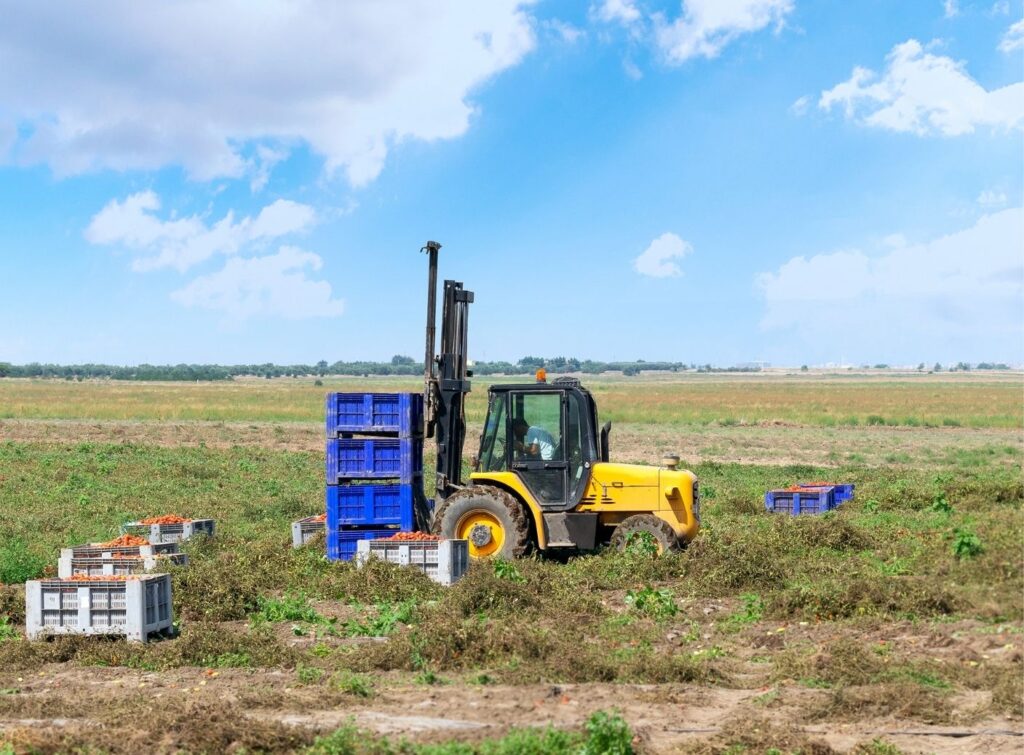Forklift Training
The Key Benefits of Rough Terrain Forklifts
Forklifts are by no means easy machines to operate. Many need proper training when operating a forklift from any class or brand, even with the rugged terrain forklift. However, it’s essential to know the forklift class or brand when learning and utilizing one. When looking for a forklift, such as the all-terrain lift, ensure you take note of its class type, limitations, and the right environment it can operate. Here is our guide to the key benefits of rough terrain forklifts.
All-Terrain Forklifts Require Specialize Training To Operate
The first benefit we’d mention among our list is that an all-terrain forklift require specialize training to operate. The all-terrain forklift is considered a Class 7 forklift, which requires training before an employee can operate it at all. There’s not one specific style of a rough terrain forklift, as each involves training to function. There are 3 subcategories of Class 7 forklifts: Vertical Mast, Variable Reach, and Truck/Trailer Mounted. Class 7 forklifts vary from four-wheel, two-wheel, and three-wheel drive forklifts.
Application Options
All-terrain forklifts have different modifications to use to help operate in a specific environment. These forklifts are highly preferred outdoors and are worth the investment. With the options of four-, two-, and three-wheel drive, the applications pose no risk when transporting inventory between areas.
Better Ground Clearance
One of the best features to use on a forklift is the clearance. The best way to explain this concept is that the ground clearance helps measure the distance between the lowest point of the undercarriage to the ground while on a flat surface. If the undercarriage is higher off the ground, your forklift will reduce the chances of “bottoming out,” which will help you get through obstacles and rough terrain better.
In other words a forklift that lacks the right amount of ground clearance can get caught when the ground surface changes. Since traditional forklifts work better on more paved “prepared work” areas and smooth roads, they usually have four inches clearance, and all-terrain would use twelve-inch tires or larger.
Improved Traction
As mentioned above, better use of ground clearance can help you get through obstacles and prevent you from being stuck. Rough terrain forklifts can combat high crests and even prevent them from slipping on slick terrain.
The traction achieved in rough terrain forklifts is from a four- or three-wheel drive train, with large
off-road tires and an articulating axle. Compared with traditional forklift tires, the tires on rugged terrain have
deeper grooves that help increase the tire’s contact with the ground. Also, the articulating axles can have up to
a seven-degree lateral change in the elevation of the tires. The improvement in traction helps with maintaining the
forklift’s stability.
Power and Output Are Optimized
While driving along the rough ground, it is best to know that tire power used on rough terrain helps move along bumpy roads when and where needed. You’ll have plenty of difficulties if you try handling harsh roads on a conventional forklift in extreme outside conditions. For example, when outside, you will experience power loss, loss of traction if a tire loses touch with the surface, and even tip over if you contact a solid object like a rock.
Hence, rough terrain forklifts can avoid this with a four-wheel drive option that adjusts to areas that seem difficult to overcome. Once engaged, it provides your forklift with improved tire power and helps you prevent power loss. When activated, the four-wheel drive option provides you with better traction when maneuvering in rough terrain.
Rough Terrain Forklifts Attachment Options
Rough terrain forklifts are available with different types of attachments. Instead of using forks to carry loads from the bottom, there are other parts you can purchase to help improve your utilities. A few attachments options include man baskets, fork carriages that rotate and allow the forklift to place materials smoothly into storage areas, and loading docks.
Rough Terrain Forklifts Come With a Diesel Engine
Another one of the benefits of rough terrain forklifts is the diesel engine that is powering the lift. The benefits of a diesel engine include increased acceleration and speed to help carry all heavy loads and operate on rugged roads. It can also be optimized to work in rural areas. Electric forklifts would not be as useful, as there would be limited resources to charge the batteries.
Reduced Maintenance Costs
These trucks are built for the harsh environments they will be expected to work in. Any other heavy machinery not
built for harsh surfaces and conditions will most likely require more maintenance to operate. However, the
rough terrain forklifts design helps withstand harsh conditions by harnessing the power of the four-wheel drive
mechanism installed into a rough terrain forklift. All in all, this helps reduce maintenance costs.
Should You Purchase a Rough Terrain Forklift?
If you frequently operate on construction sites or are moving products on an uneven nonprepared surface area, then you may want to consider using a rough terrain forklift.
Before inquiring about RT forklift training, it’s essential to understand the specific type of class 7 forklift you have. For example, it could either be a vertical mast, variable reach, or a truck- and trailer-mounted forklift that your employees are learning how to operate. Purchasing a training set or scheduling forklift training with First Quality Forklift Training are two choices to consider when training new workers. With the purchase of the program and on-site training, there are many opportunities for your workers to learn about the safe operation of class 7 forklifts.
Consider the RT forklift training and other similar training courses when looking to certify your forklift drivers. First Quality Forklift Training offers convenient training courses to help you prepare your workers for becoming licensed to operate a rough-terrain forklift.



Hi! This content is well informative and I can say, commendable. Thank you for your suggestions!